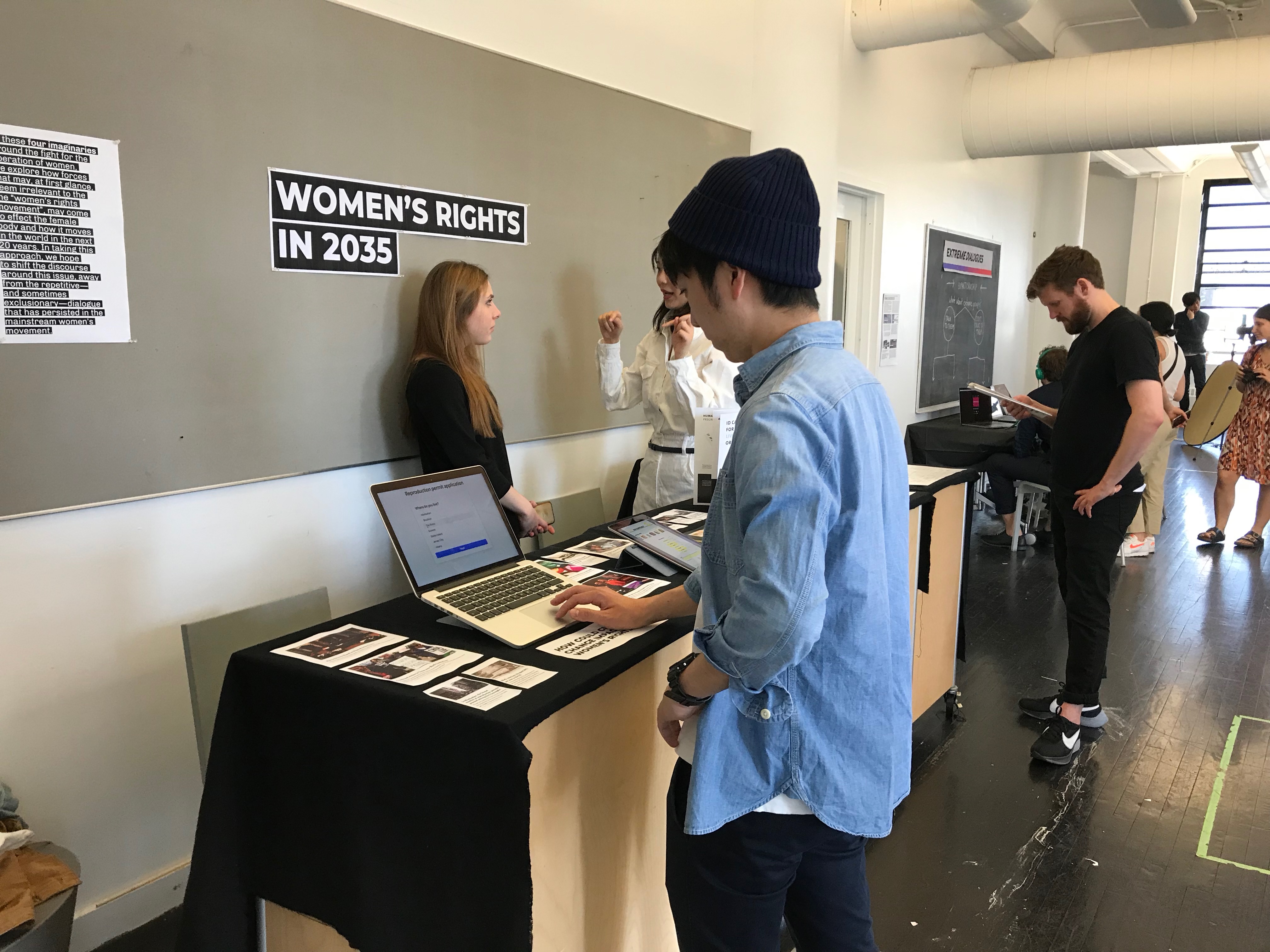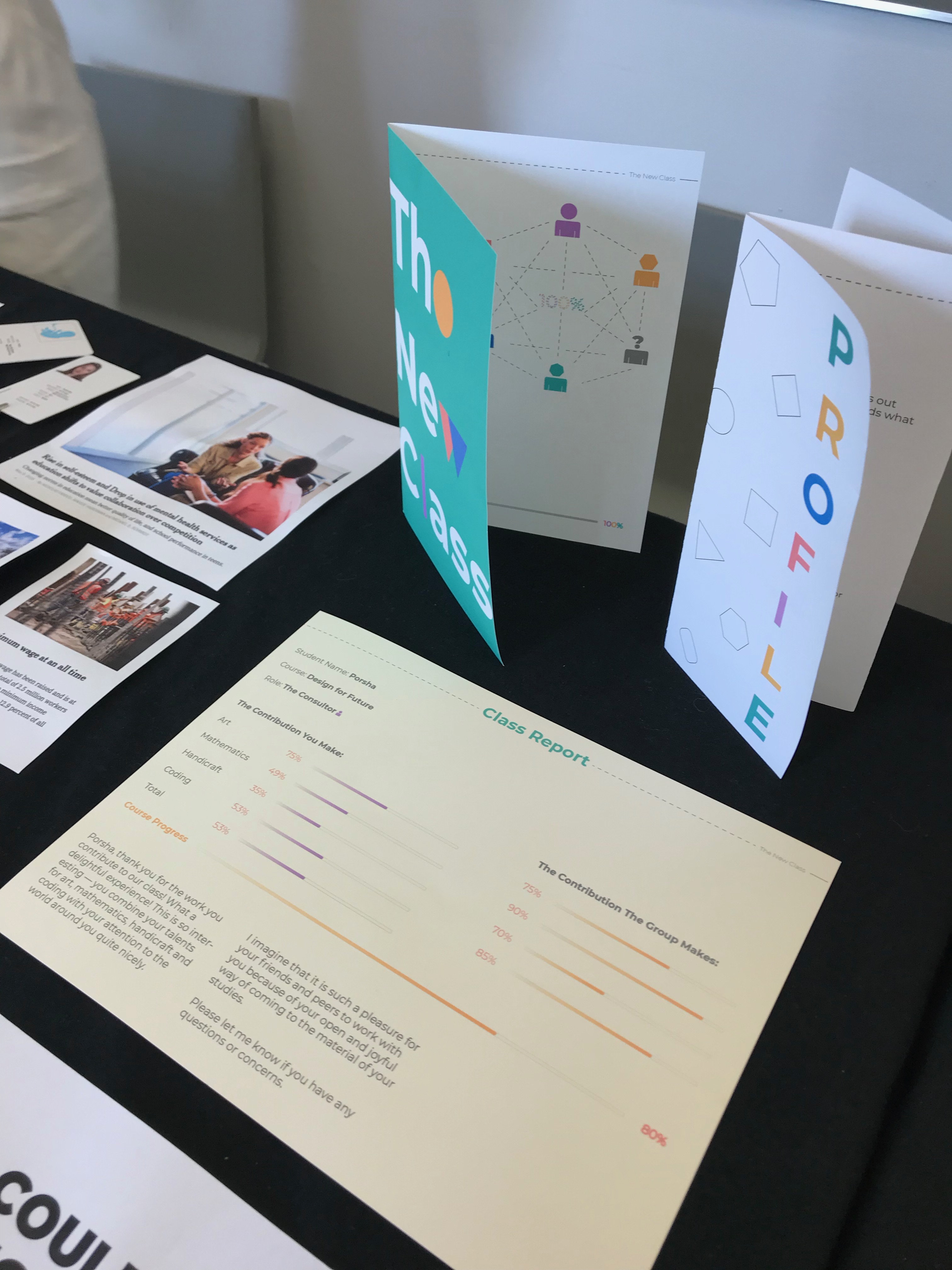FUTURE
OF
WOMEN’S
RIGHTS
Constructing future scenarios around women’s rights.
Year
2019
INTRO
In these four imaginaries around the fight for the liberation of women, we explore how forces that may, at first glance, seem irrelevant to the the “women’s rights movement”, may come to effect the female body and how it moves in the world within the next 20 years. In taking this approach, we hope to shift the discourse around this issue, away from the repetitive--and sometimes exclusionary--dialogue that has persisted in the mainstream women’smovement.
RESEARCH
We started by conducting interviews with several women, who gave us useful insights on their expectations of the future, and how they had observed women’s rights changing in the past years.
Afterwards, we started exploring the different stakeholders around the women’s right movement, creating a stakeholder map in the realms of: international, national, government, education, and the new school.
We categorized the different stakeholders into: organization, educator/scholar, activist, law/policy, and other. With different colors depending on how was their relation with women’s rights.
Afterwards, we started exploring the different stakeholders around the women’s right movement, creating a stakeholder map in the realms of: international, national, government, education, and the new school.
We categorized the different stakeholders into: organization, educator/scholar, activist, law/policy, and other. With different colors depending on how was their relation with women’s rights.
Stakeholder Map

In order to understand how fast or slow things have changed in the past, we also developed a timeline

In this process we met Gina Walker, a professor of Women’s Studies at The New School, with whom we gathered several times to discuss ideas and futures around our topic. Since Gina’s work aims to reveal an alternative history that values the roles women have always played in human endeavors, her insights were complementary to our task to design future scenarios for women’s rights. Aligned with the theory that, for imagining the future, the past serves as a fertile ground, we were able to transfer the deep and valuable insights about the past that she shared with us during our meetings into visions for future scenarios. Hence, her investigations about alternatives to traditional accounts of the past of women are reflected in the alternatives that we imagined for the future of women.
FUTURE EXPLORATION
We started exploring how different movements or trends could impact women’s rights in the future. These were: climate change, consent & identity, feminist education, and the animal rights movement. Below is our first mind-map.
FUTURE CONSTRUCTION
Based on our future exploration, we constructed 4 future scenarios and 4 artefacts in them. In these four imaginaries around the fight for the liberation of women, we explore how forces that may, at first glance, seem irrelevant to the the “women’s rights movement”, may come to effect the female body and how it moves in the world in the next 20 years. In taking this approach, we hope to shift the discourse around this issue, away from the repetitive—and sometimes exclusionary—dialogue that has persisted in the mainstream women’s movement.
SCENARIOS
Scenario 1
CLIMATE CHANGE
Due to overpopulation and limited resources, the government introduces mandated limitations on reproduction in attempts to guarantee quality of life. There’s a social score assigned to each person of age, and a strict process in which people can apply to have children, but only those deemed most worthy will be granted a reproduction permit.
![]()
![]()
CLIMATE CHANGE
Due to overpopulation and limited resources, the government introduces mandated limitations on reproduction in attempts to guarantee quality of life. There’s a social score assigned to each person of age, and a strict process in which people can apply to have children, but only those deemed most worthy will be granted a reproduction permit.


Scenario 2
CONSENT
After shifting paradigms around issues of consent and sex following the #metoo movement, a dating app emerges that requires users to consent to specific sexual acts, contraceptive methods, and sexual health disclosure before going into a date organized through the app which at may lead to sexual encounters.
![]()
![]()
![]()
CONSENT
After shifting paradigms around issues of consent and sex following the #metoo movement, a dating app emerges that requires users to consent to specific sexual acts, contraceptive methods, and sexual health disclosure before going into a date organized through the app which at may lead to sexual encounters.



Scenario 3
ANIMAL RIGHTS
Animal’s rights are brought to the forefront of the fight for civil rights. The debate around what should be considered “life” lead to the decision that a fetus should be regarded as a living organism with equal rights to humans and animals. To ensure that each life is accounted for, a new system of Identification Documents are filed to be used for every living being.
![]()
![]()
![]()
![]()
![]()
ANIMAL RIGHTS
Animal’s rights are brought to the forefront of the fight for civil rights. The debate around what should be considered “life” lead to the decision that a fetus should be regarded as a living organism with equal rights to humans and animals. To ensure that each life is accounted for, a new system of Identification Documents are filed to be used for every living being.





Scenario 4
EDUCATION
The New Class is a class taken collaboratively. Working in a team, students no longer stand alone or compete with each other, they stand together and celebrate each other’s success. Students are no longer given scores depending on their individual effords and skills. They work together to achieve the completion of the whole course.
![]()
![]()
![]()
![]()
![]()
![]()
EDUCATION
The New Class is a class taken collaboratively. Working in a team, students no longer stand alone or compete with each other, they stand together and celebrate each other’s success. Students are no longer given scores depending on their individual effords and skills. They work together to achieve the completion of the whole course.






EXHIBITION


